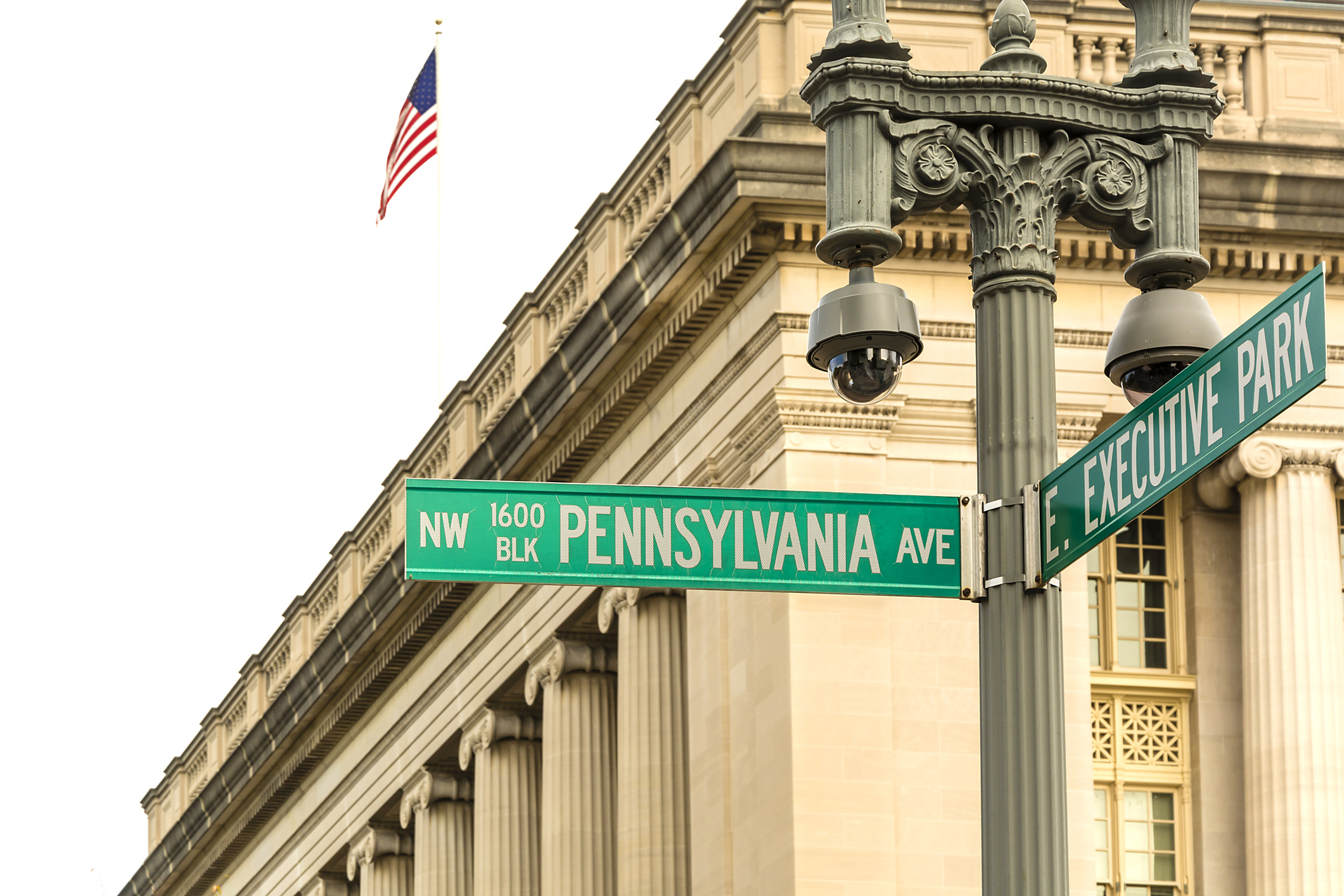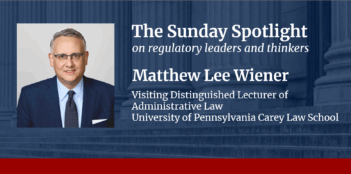
Officials and scholars evaluate major developments one year after the President’s Inauguration.
After being sworn in as the 45th President of the United States, President Donald J. Trump moved to make a significant shift in federal regulatory policy. Having campaigned on a deregulatory agenda, he nominated key appointees to help him execute his agenda—such as U.S. Environmental Protection Agency Administrator Scott Pruitt and Office of Information and Regulatory Affairs Administrator Neomi Rao.
President Trump also signed a series of executive orders related to regulation. For example, Executive Order 13,771 requires agencies to eliminate two existing regulations for each new regulation they issue. Executive Order 13,777 directs agencies to establish “regulatory reform task forces” to examine and consider the repeal or modification of existing regulations.
Other executive orders took aim at reforming particular fields of regulation. Executive Order 13,783, for example, ordered agencies to undertake a review of rules that may “burden the development or use of domestically produced energy resources” in an effort to bolster domestic energy development.
Much action during the Trump Administration’s first year aimed at reversing regulations adopted by the Obama Administration. For example, President Trump repealed fourteen Obama-era rules by signing legislation passed by the Republican-controlled U.S. House of Representatives and U.S. Senate under the Congressional Review Act. Among these repealed rules were ones pertaining to stream protection, teacher preparation, arbitration agreements, wildlife, and federal acquisition.
And early in his term President Trump nominated, and the Senate confirmed, Neil M. Gorsuch to the U.S. Supreme Court. Gorsuch, a former federal appeals court judge, has advocated that the Court reconsider the degree to which it requires federal courts to defer to administrative agencies when interpreting the law.
Against this backdrop of change, this series in The Regulatory Review examines the regulatory developments that occurred over the past year. The series includes seven essays authored by prominent public officials and scholars: Douglas Chin, Attorney General for Hawaii; Ken Paxton, Attorney General for Texas; Daniel Farber, a law professor at the University of California, Berkeley; Ilya Somin, a law professor at George Mason University; Cary Coglianese, a law professor at the University of Pennsylvania; Richard J. Pierce, Jr., a law professor at The George Washington University; and Mark Nevitt, Sharswood Fellow at the University of Pennsylvania Law School.
The Regulatory Review is pleased to present this series of commentaries on the Trump Administration’s first year.
The Fight Against the Travel Ban
January 22, 2018 | Doug Chin, Attorney General of Hawaii
The rollout of President Donald J. Trump’s initial travel ban was by all accounts a disaster. The weekend the ban was announced, protesters flooded airports around the country, including Honolulu’s. Lawyers offered whatever support they could to arriving passengers. But the lawyers assisting passengers at airports were not the only lawyers working that weekend. Within days of taking effect, President Trump’s first executive order was challenged in several federal courts, including in Hawaii.
What A Difference A Year Makes
January 23, 2018 | Ken Paxton, Attorney General of Texas
In the two years that my term as Texas Attorney General overlapped with the Obama presidency, I sued his Administration 22 times to uphold the Constitution and the rule of law, preserve states’ rights, and stop it from bypassing Congress. We should applaud President Trump for following the law and staying within the power given to him by the Constitution. He is aggressively rolling back the administrative state and the worst excesses of the Obama era, which imperil the economy, businesses and job growth.
Trump, EPA, and the Anti-Regulatory State
January 24, 2018 | Daniel A. Farber, University of California, Berkeley
Whether from the perspective of environmental protection or regulatory economics, 2017 has not been a good year. Experience to date under the Trump Administration is suggestive of industry capture or reflexive ideological opposition to regulation—or both. Unfortunately, each of the traditional sources of checks on political leadership—centralized regulatory review, internal agency checks, congressional oversight, and litigation—apparently have been substantially neutered or captured.
On Immigration, Trump is no Deregulator
January 25, 2018 | Ilya Somin, George Mason University
If there is one thing that most commentators agree on with regard to President Donald J. Trump’s economic policies, it is that he promotes deregulation. But the near-universal belief that Trump is a deregulator is in need of serious revision. His Administration’s immigration policies are nothing of the kind. Not only do they increase regulation, but they likely do so more than Trump’s other regulatory policies decrease it.
Let’s Be Real About Trump’s First Year in Regulation
January 29, 2018 | Cary Coglianese, University of Pennsylvania
Deregulation has been widely characterized as one of President Trump’s top policy achievements in his first year in office. That says more about how little else the President has accomplished, because so far the Administration has made only the tiniest of dents in the existing stock of federal regulation. Claims to the contrary are just not real.
Republicans Discover the Mythical Basis For Regulatory Reform
January 30, 2018 | Richard J. Pierce, Jr., The George Washington University
During the six years when Republicans controlled Congress and President Barack H. Obama occupied the White House, Republican leaders proposed and the U.S. House of Representatives often enacted myriad “regulatory reform” bills. We have heard little about the need for these legislative reforms to the rulemaking process since Republicans gained control not only of Congress but also the White House.
A Tumultuous Year for Transgender Service Members
January 31, 2018 | Mark Nevitt, University of Pennsylvania
The year 2017 was a tumultuous one for transgender military service members. Following the introduction of Obama-era policies, many transgender service members started openly serving in the military and receiving transgender-related medical care. But that all seemingly changed with a tweet from President Donald J. Trump in July 2017. The past year has introduced considerable uncertainty into military personnel policy and the status of transgender service members.



